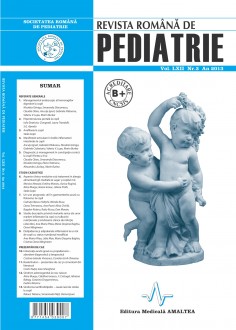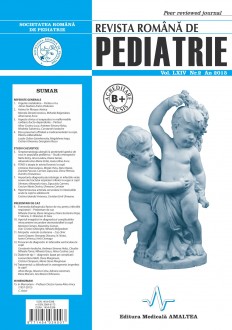SELECT ISSUE

Indexed

| |

|
|
|
| |
|
|
|

|
|
|
|
|
|
|
HIGHLIGHTS
National Awards “Science and Research”
NEW! RJP has announced the annually National Award for "Science and Research" for the best scientific articles published throughout the year in the official journal.
Read the Recommendations for the Conduct, Reporting, Editing, and Publication of Scholarly work in Medical Journals.
The published medical research literature is a global public good. Medical journal editors have a social responsibility to promote global health by publishing, whenever possible, research that furthers health worldwide.
Severe acute propafenone poisoning – diagnosis and therapeutic approaches
Cristina Iolanda Vivisenco and Coriolan Emil Ulmeanu
ABSTRACT
Propafenone is an antiarrhythmic drug which blocks myocardial sodium channels as the main mechanism of action. Ingestion of a toxic dose of propafenone induces through the membrane stabilizing effect a clinical presentation with cardiovascular, neurological and metabolic expression, sometimes life-threatening. The authors present the case of a 13 year old female patient admitted for cardiac conduction abnormalities, seizures and coma after intentional ingestion of a toxic dose of propafenone. The patient was successfully treated with intravenous sodium bicarbonate therapy and supportive measures. The authors mention also the latest information from the literature regarding the management of propafenone poisoning.
Key words: propafenone, poisoning, child, membrane stabilizing effect

